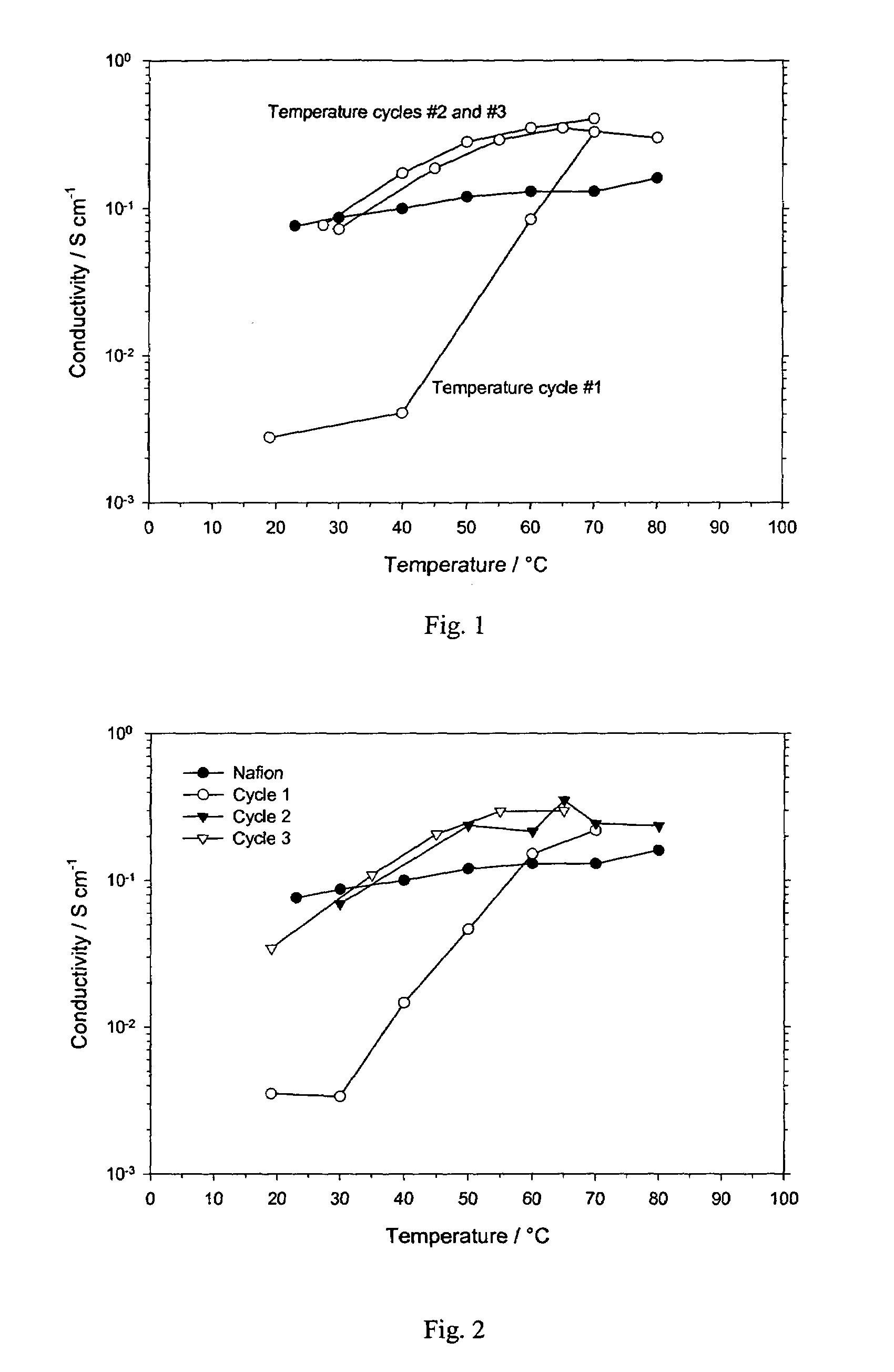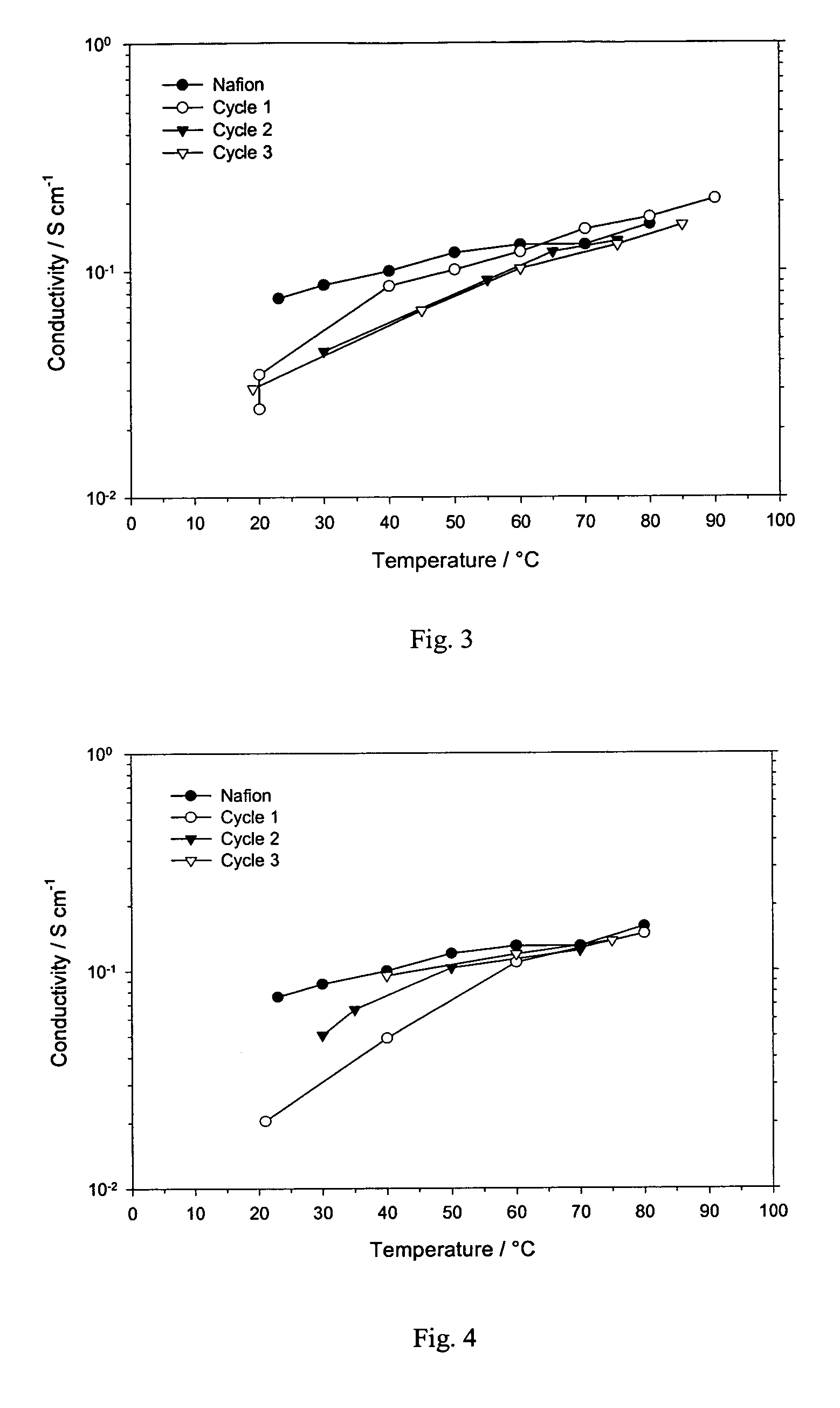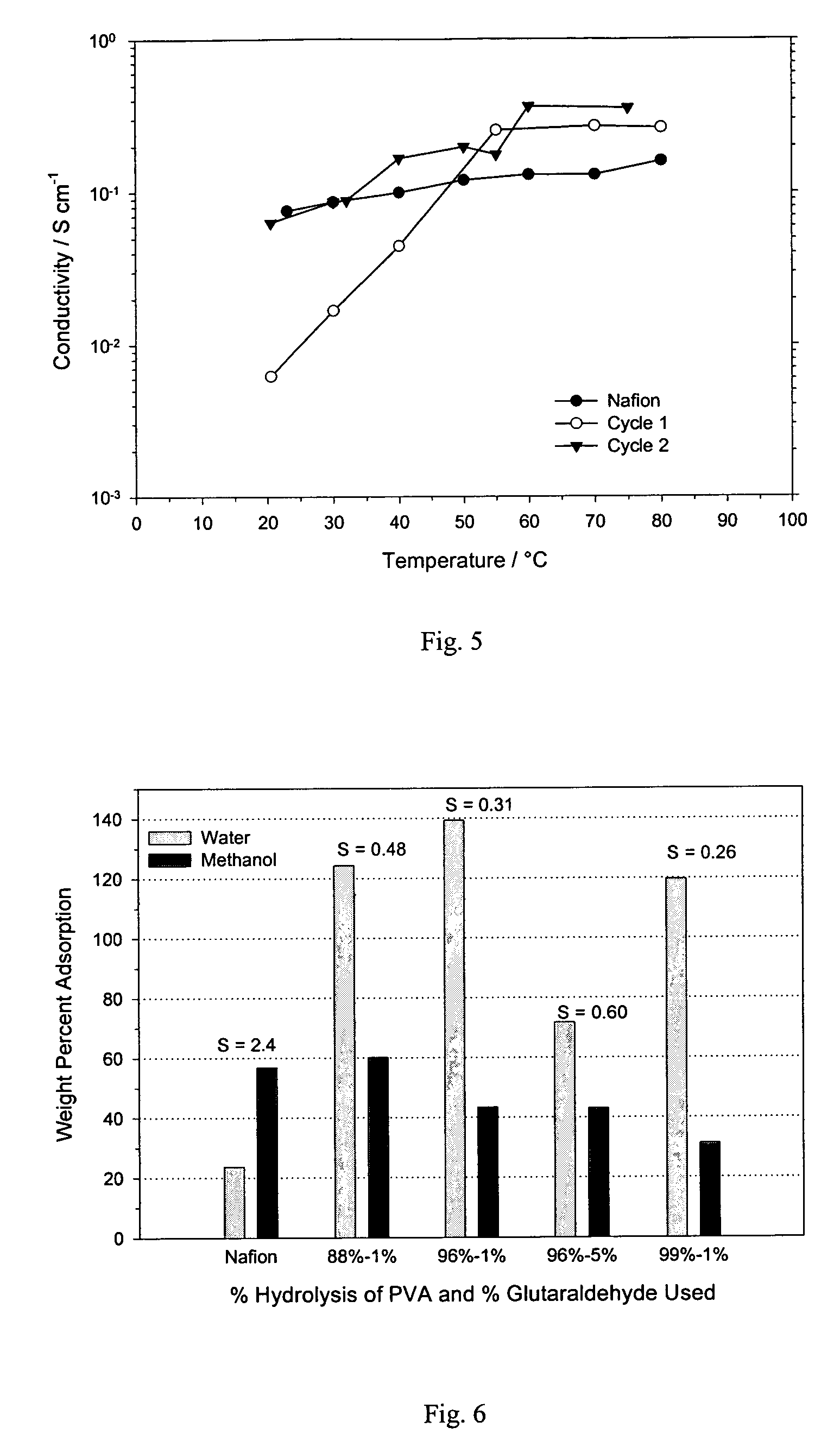Interpenetrating polymer network
a polymer network and interpenetrating technology, applied in the direction of electrolyte holding means, fuel cell details, electrical apparatus, etc., can solve the problems of increasing system weight and complexity, reducing fuel efficiency, and difficulty in safe storage, transportation and handling. achieve the effect of film hydration and greater permeability to water
- Summary
- Abstract
- Description
- Claims
- Application Information
AI Technical Summary
Benefits of technology
Problems solved by technology
Method used
Image
Examples
example 1
[0036]An inventive IPN film nominally designated as 4% AMPS—21% HEMA—75% PVA is prepared as follows. A mixture of 40 ml of ethanol, 40 ml of methanol, and ml deionized water is deaerated by bubbling nitrogen gas while stirring. While continuing to slowly bubble nitrogen and with stirring, 0.08 g AMPS is dissolved into solution, followed by 0.39 ml of HEMA, 0.05 ml EGDM, and 0.014 g AIBN. The solution is refluxed for 9 h at 60° C. with continuous stirring and slow bubbling of nitrogen, then allowed to cool to room temperature. 10 ml of deionized water that had been deaerated with nitrogen is added, followed by 30 ml of a 5% aqueous solution of 96% hydrolyzed PVA (prepared by dissolving 1.5 g PVA in 30 ml of deionized water with the aid of a boiling water bath). The solutions are stirred while bubbling nitrogen, then solution cast in an open glass petri dish. Solvents are allowed to evaporate in a fume hood for at least two days. The dry film is peeled from the glass dish, then return...
example 2
[0039]An inventive IPN film composed of 4% AMPS—21% HEMA—75% PVA is synthesized in a manner similar to Example 1, except the PVA is only 88% hydrolyzed and only 1% glutaraldehyde is used in the cross-linking reaction. Other modifications are the use of ethanol, methanol and distilled water in the ratio of 25 ml: 25 ml: 5 ml, EGDM and AIBN used in the amounts of 13 wt % and 3 wt % respectively, and omitting the water that is added to the AMPS-HEMA solution prior to addition of the appropriate amount of aqueous PVA solution.
[0040]Conductivity as a function of temperature for the inventive IPN film prepared in Example 2 is shown in FIG. 2. A similar effect on conductivity with temperature cycling is seen as observed for Example 1, where conductivity increases significantly at temperatures above 40° C. on the first cycle, but remains as high or higher than Nafion® on at all temperatures on subsequent cycles. Selectivity for methanol is measured to be 0.48 as shown in FIG. 6 and given in...
example 3
[0041]An inventive IPN film composed of 4.6% AMPS—39.6% HEMA—55.8% PVA IPN is prepared in a manner similar to Example 2 with the following modifications. The PVA is 96% hydrolyzed, and 11.3 wt % EGDM and 2.6 wt % AIBN are used. The order of performing the cross-linking reactions is also altered. One piece of the cast film is cross-linked by the previously described method; first at 70° C. overnight followed by cross-linking in 1% glutaraldehyde. The remaining piece of film is first cross-linked by soaking in 1% glutaraldehyde containing 0.1 N HCl, rinsed in water and dried, followed by cross-linking at 70° C. When cross-linking in glutaraldehyde follows cross-linking at 70° C., the film becomes soft during cross-linking in the glutaraldehyde solution but remains intact during handling. If treatment in glutaraldehyde occurs before heating at 70° C., the film in the glutaraldehyde solution becomes fragile and requires gentle handling. After treating at 70° C. this inventive IPN film a...
PUM
| Property | Measurement | Unit |
|---|---|---|
| Weight | aaaaa | aaaaa |
| Electrical conductivity | aaaaa | aaaaa |
| Density | aaaaa | aaaaa |
Abstract
Description
Claims
Application Information
 Login to View More
Login to View More - R&D
- Intellectual Property
- Life Sciences
- Materials
- Tech Scout
- Unparalleled Data Quality
- Higher Quality Content
- 60% Fewer Hallucinations
Browse by: Latest US Patents, China's latest patents, Technical Efficacy Thesaurus, Application Domain, Technology Topic, Popular Technical Reports.
© 2025 PatSnap. All rights reserved.Legal|Privacy policy|Modern Slavery Act Transparency Statement|Sitemap|About US| Contact US: help@patsnap.com



